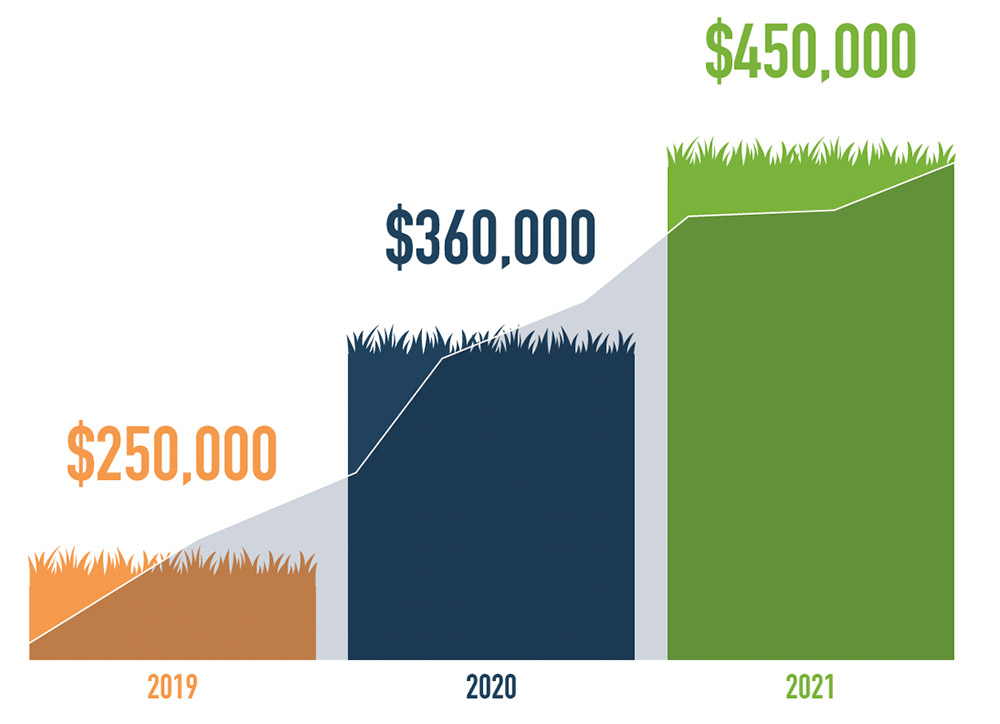Case Study: Moeller Lawn & Landscape
A born entrepreneur, Michael Moeller started mowing lawns to earn money when he was 11 years old. He soon discovered that he enjoyed caring for and beautifying his customers’ lawns so much that he founded Moeller Mowing, which later became Moeller Lawn & Landscape when he added an array of landscaping services to the business.
"Since the implementation of Arborgold’s business management software in early 2020, revenue has skyrocketed from $250,000 to $450,000 in just two years."
— Michael Moeller, Moeller Lawn & Landscape Founder and Owner

Challenge
Looking for Software with Robust Tree-Tracking Features
According to Jamie Moeller, office manager and Michael’s mom, the business software programs that the company had been using for several years couldn’t keep up with the firm’s rapid growth. They needed something more robust with greater functionality for managing and reviewing the metrics on everything from estimating the profitability on each job to tracking the payments for completed jobs, among many other things.
Solution
Transitioning from a Home-Grown System to Arborgold
After doing some research, the company made the decision to partner with Arborgold and quickly implemented several of the functions that were high priorities for them. Jamie’s lengthy to-do list includes setting up and integrating all of Arborgold’s interactive functions because she has watched the company’s revenues increase exponentially since joining forces with Arborgold.

Results
Elevating the Tree Care Industry and the Professional Arborists
Since the implementation of Arborgold’s business management software in early 2020, Moeller Lawn & Landscape has skyrocketed from revenues of $250,000 at year-end 2019 to $450,000 in 2021. The first quarter of 2022 was up 25% over the same period in 2021, indicating that 2022 could be another blockbuster year.
Arborgold’s metrics gave Moeller Lawn & Landscape the confidence to switch from a three-man mowing team to a two-man mowing team because the numbers showed that the company could be just as profitable—and more efficient—with a two-man team.
